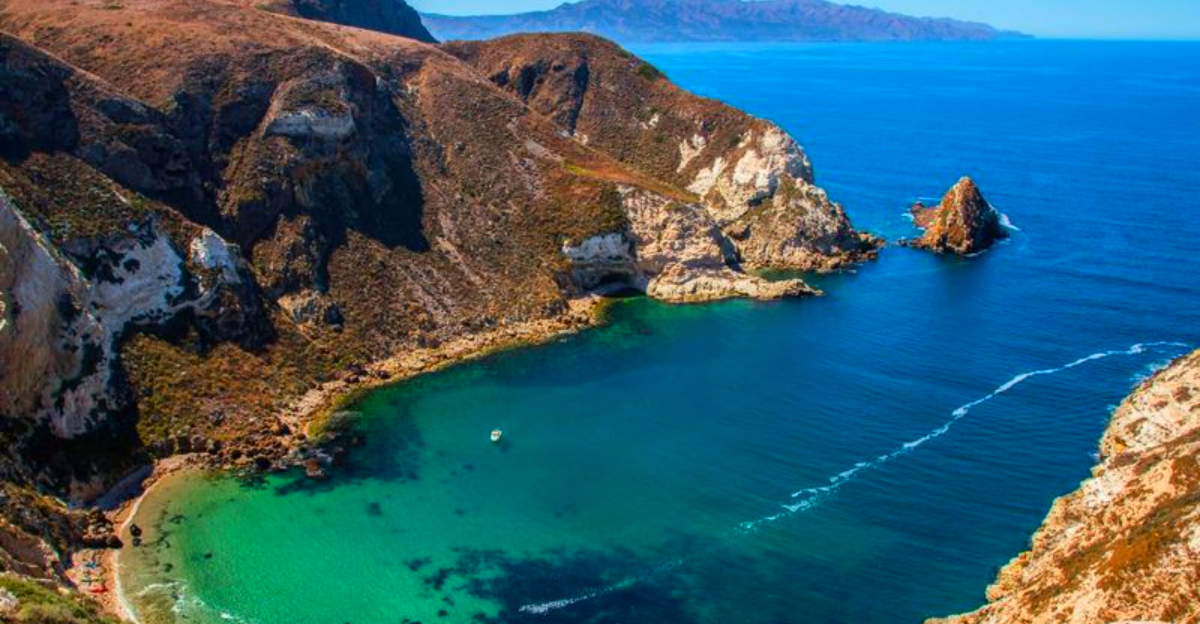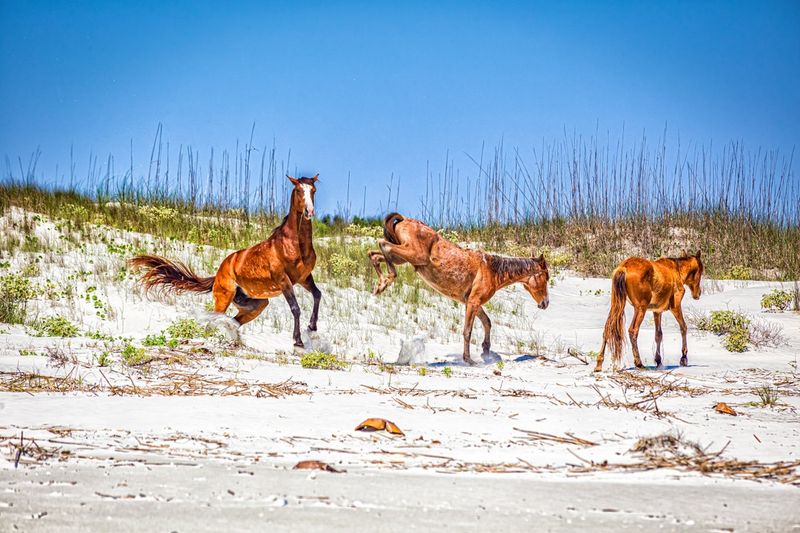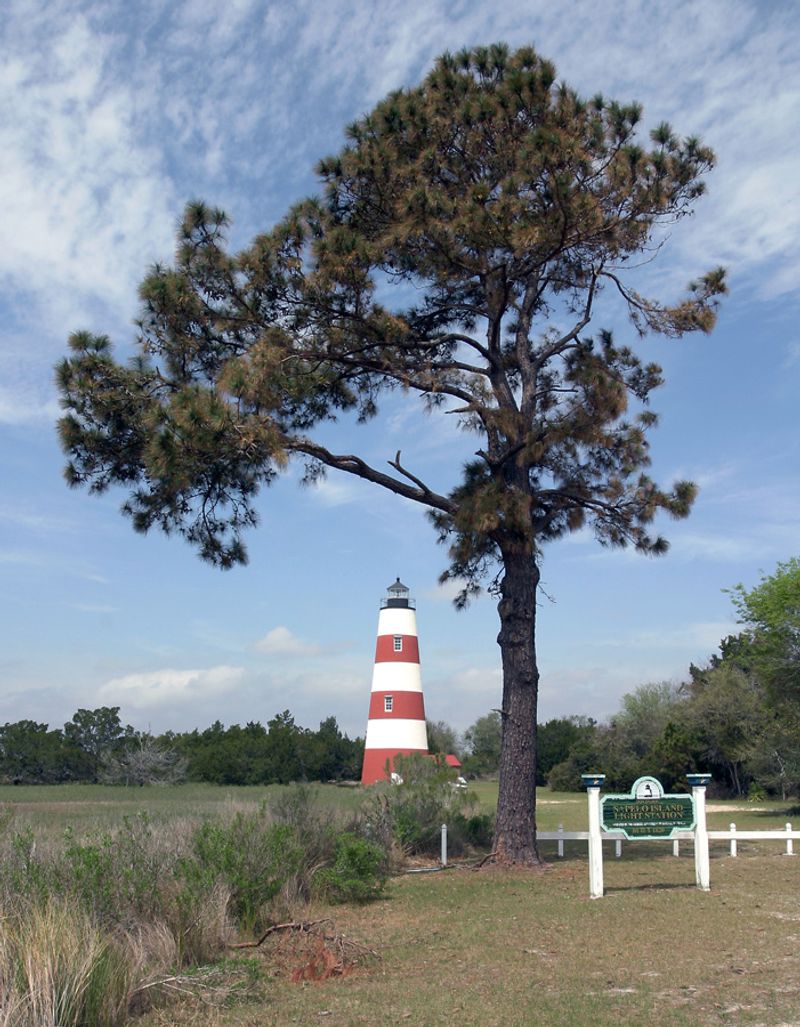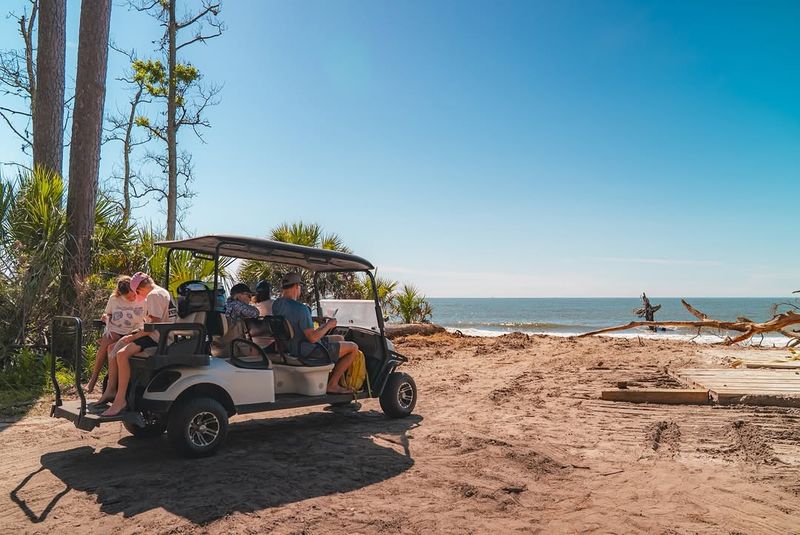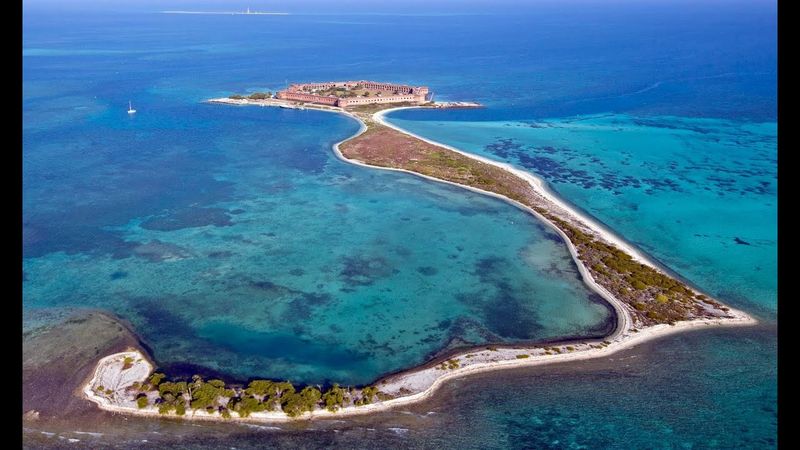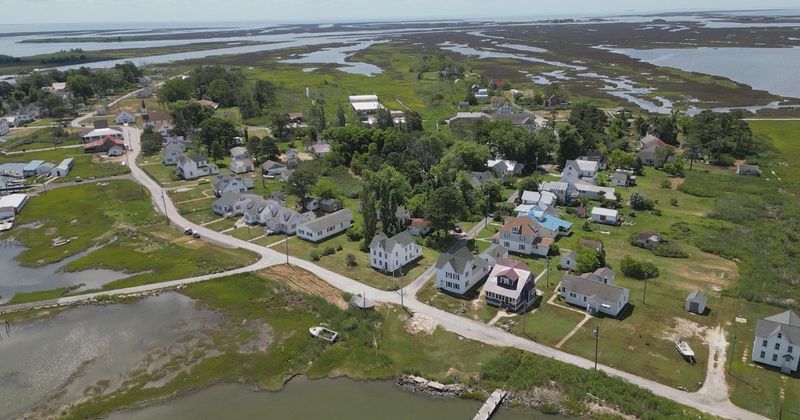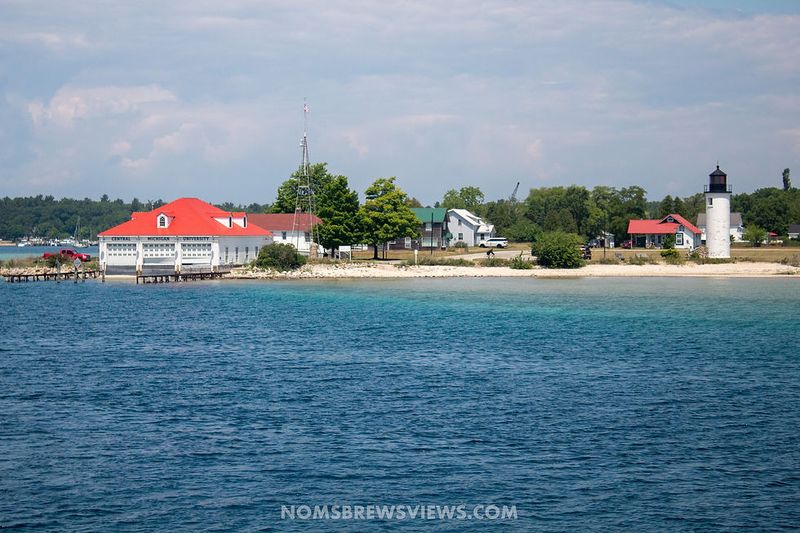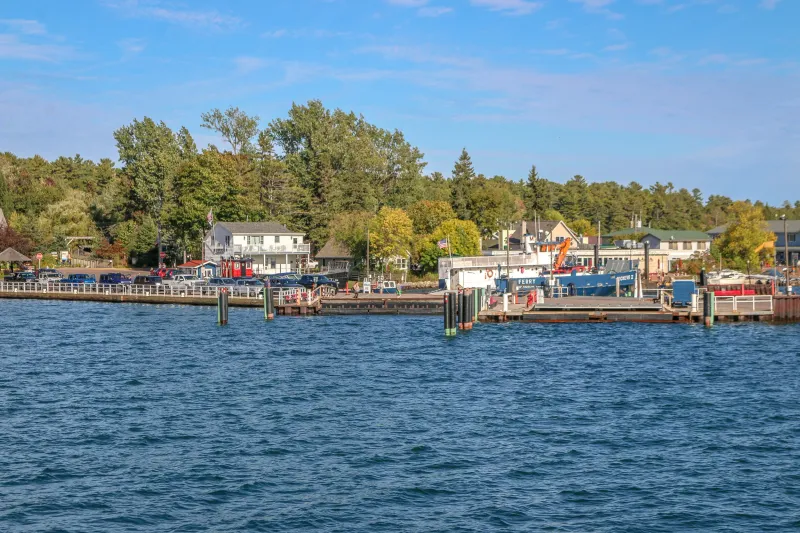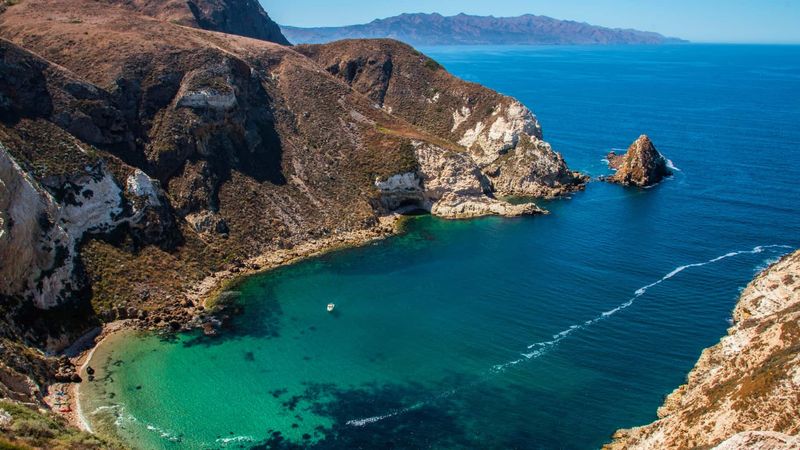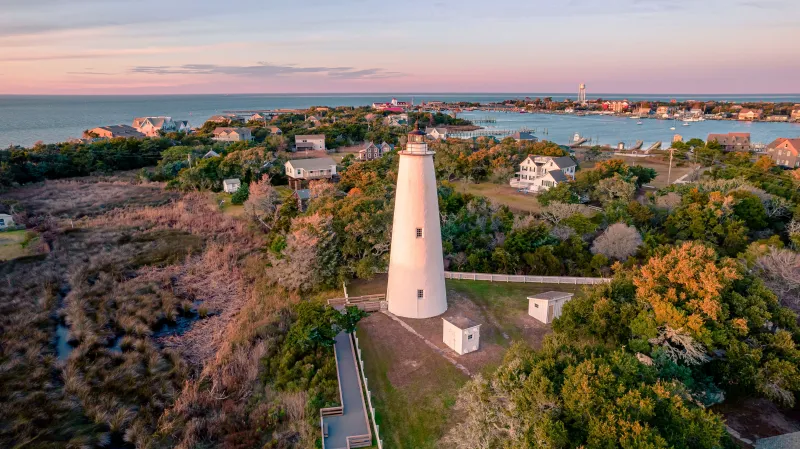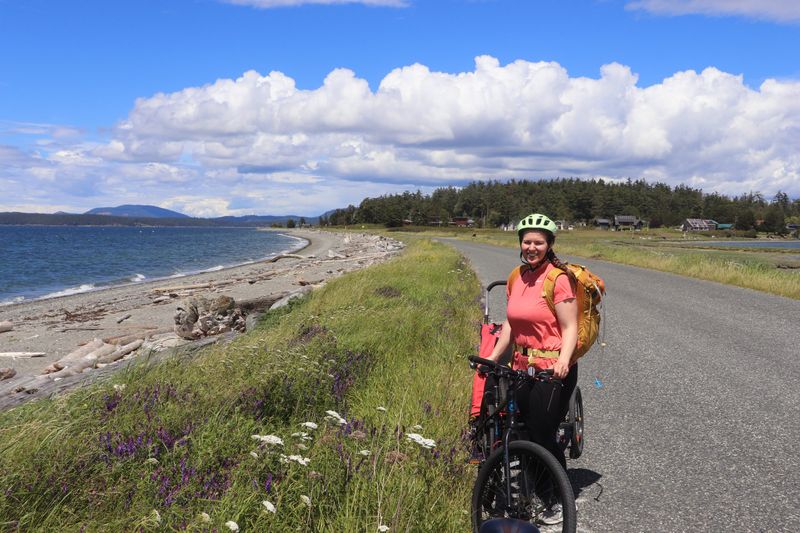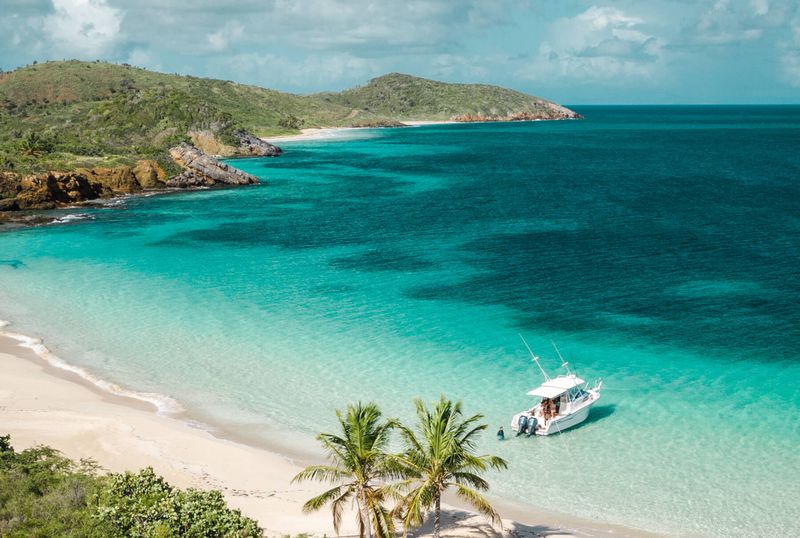America’s coastlines hide dozens of islands most travelers have never heard of. These places offer wild beaches, historic sites, and unique cultures far from the crowded tourist spots. From Georgia’s moss-draped shores to Puerto Rico’s glowing waters, these hidden gems are waiting for your next adventure.
1. Cumberland Island, Georgia
Wild horses wander freely across 18 miles of unspoiled shoreline where the Atlantic meets ancient maritime forests. Crumbling mansions from America’s wealthiest families peek through tangled vines, creating an eerie beauty you won’t find anywhere else. The island feels frozen in time, with more armadillos than people on most days.
Getting here requires planning since the National Park Service limits daily visitors. Passenger ferries leave from St. Marys, and reservations fill up weeks ahead during peak season. Pack everything you need because there are no stores or restaurants once you arrive.
Camping under star-filled skies or staying at the historic Greyfield Inn are your only overnight options.
2. Sapelo Island, Georgia
One of the last intact Gullah-Geechee communities thrives here, preserving African-American coastal traditions dating back centuries. Hog Hammock’s small population welcomes curious visitors who want to learn about sweetgrass basket weaving and unique Low country dialects. The 1820 lighthouse still stands guard over miles of quiet beaches where you’ll rarely see another soul.
Access is tightly controlled to protect both the culture and ecosystem. You must book a spot on the state-run ferry from Meridian, and most visits include guided tours led by knowledgeable locals. Day trips fill quickly, especially during spring and fall when the weather is perfect.
Bring binoculars for bird watching across the salt marshes.
3. Daufuskie Island, South Carolina
No bridge connects this quirky island to the mainland, which keeps the vibe relaxed and wonderfully odd. Golf carts are the main transportation, zipping past art galleries, historic ruins, and Gullah heritage sites tucked between palmetto groves. Pat Conroy taught here in the 1960s, and his book later became the movie Conrack.
Water taxis and passenger ferries shuttle visitors from Hilton Head and Bluffton year-round. Once you arrive, rental golf carts become your wheels for exploring sandy lanes and hidden coves. Several small inns and vacation rentals let you stay overnight and watch spectacular sunsets over Calibogue Sound.
Don’t miss the Bloody Point Lighthouse ruins at the southern tip.
4. North Captiva Island, Florida
Hurricane Charley literally split this barrier island in half back in 2004, creating a narrow channel that now defines its wild character. Roads simply don’t exist here, replaced by sandy paths perfect for beachcombing adventures. Shelling is legendary, with collectors filling buckets with lightning whelks, sand dollars, and junonia shells after every tide.
Reaching North Captiva requires either a boat ride from Pineland Marina or arriving by small private plane. No cars means you’ll walk, bike, or catch a golf cart ride to explore. A handful of vacation homes and a small resort provide lodging, but most visitors come just for the day.
Pack a cooler because dining options are extremely limited.
5. Garden Key (Dry Tortugas National Park), Florida
Fort Jefferson rises from the turquoise Gulf like something from a pirate movie, its massive brick walls built to protect American shipping lanes during the 1800s. Dr. Samuel Mudd was imprisoned here after treating John Wilkes Booth’s broken leg following Lincoln’s assassination. Today, sea turtles and tropical fish outnumber visitors in the gin-clear waters surrounding the fort.
Getting there is half the adventure, either by high-speed catamaran or seaplane from Key West. Snorkeling the moat wall reveals colorful coral, barracuda, and sometimes nurse sharks gliding through the shallows. Primitive camping is available with advance permits, but most people visit as a day trip.
Bring plenty of water since freshwater is scarce.
6. Tangier Island, Virginia (Chesapeake Bay)
Residents speak with an accent closer to Elizabethan English than modern American, a linguistic time capsule preserved by centuries of isolation. Soft-shell crab is king here, harvested by watermen whose families have worked these waters for generations. Rising seas threaten to erase the island entirely within a few decades, making every visit feel urgent and precious.
Seasonal ferries and small planes provide the only access from the mainland. Once you arrive, golf carts and bicycles replace cars on the narrow lanes between weathered homes. Several family-run restaurants serve crab cakes and fresh seafood caught that morning.
Visit the tiny museum to understand the island’s unique culture and uncertain future.
7. Smith Island, Maryland (Chesapeake Bay)
Maryland’s only inhabited offshore island is actually three tiny villages connected by marsh trails and a fierce pride in waterman traditions. Smith Island cake, the state dessert, features eight to ten thin layers stacked with frosting, a recipe perfected by generations of island bakers. The entire island sits just a few feet above sea level, surrounded by endless marsh grass that glows gold at sunset.
Passenger ferries depart from Crisfield, docking at either Ewell or Tylerton depending on your destination. Bike rentals help you explore, though the islands are small enough to cover on foot. Several inns offer overnight stays, and local guides lead kayak tours through the labyrinth of tidal creeks.
Order cake ahead from one of the island bakers.
8. Assateague Island, Maryland/Virginia
Shaggy ponies roam 37 miles of shifting barrier island, their origins debated but their beauty undeniable. Legend says they swam ashore from a Spanish shipwreck, though historians believe colonists left them to graze centuries ago. Either way, watching stallions gallop through the surf at sunrise makes you believe in magic.
Drive-up access from both Maryland and Virginia sides makes this island easier to reach than most on this list. Over-sand vehicle permits let adventurous drivers explore remote beaches beyond the crowds. Kayakers paddle through quiet bays where herons fish and ponies sometimes wade belly-deep to reach marsh grass.
Check current safety notices before visiting since storms frequently reshape the shoreline.
9. Isle au Haut (Acadia National Park), Maine
Acadia’s forgotten outpost offers everything the main park provides minus the summer traffic jams and tour buses. Spruce-scented trails wind along granite cliffs where waves crash 60 feet below, and you might hike for hours without seeing another person. Champlain named it “high island” when he sailed past in 1604, and it still feels impossibly remote.
Year-round ferries run from Stonington, with seasonal service extending to Duck Harbor near the campground. Only five lean-to shelters exist for overnight visitors, and they book up months in advance. Day-trippers have about six hours to explore before catching the return boat.
Pack a lunch since there are no services inside the park section.
10. Monhegan Island, Maine
Artists have flocked here since the 1800s, drawn by dramatic light and cliffs that plunge straight into the cold Atlantic. Jamie Wyeth maintains a studio here, following in the footsteps of Rockwell Kent and dozens of other painters captivated by the raw beauty. Cars are forbidden for visitors, leaving only footpaths connecting the tiny village to nine miles of spectacular coastal trails.
Passenger ferries depart from Port Clyde, New Harbor, and Boothbay Harbor depending on season and schedule. The crossing takes about an hour through waters where puffins and seals are common sightings. Several inns and rental cottages provide lodging, while a handful of galleries showcase local artwork.
Visit during September for perfect hiking weather and smaller crowds.
11. Beaver Island, Michigan (Lake Michigan)
A Mormon king once ruled this remote island before angry mainlanders drove his followers away in the 1850s, leaving behind strange stories and a handful of historic buildings. Today, shipwreck enthusiasts explore dozens of wrecks visible in the clear water surrounding the island. The two-hour ferry crossing from Charlevoix feels like traveling to another country, especially when fog rolls across the lake.
Beaver Island Boat Company operates year-round service, though winter crossings can be rough and unpredictable. Rental cars and bikes help you explore 55 square miles of forest, beach, and tiny settlements. Several small inns and vacation homes accommodate overnight guests wanting to experience the deep solitude.
Bring warm layers even in summer since lake breezes keep temperatures cool.
12. Madeline Island, Wisconsin (Apostle Islands)
La Pointe’s galleries and quirky shops give this island a cultured vibe unusual for such a remote location. It’s the only Apostle Island with a year-round community, though the population swells from 300 to several thousand during summer months. When winter freezes Lake Superior solid, an ice road connects the island to Bayfield, marked by Christmas trees stuck in the ice.
Car and passenger ferries run frequently between Bayfield and La Pointe during the warmer months. Bring your vehicle to explore the island’s beaches, nature preserves, and historic sites at your own pace. Kayakers paddle to nearby uninhabited islands, camping on remote beaches within the national lakeshore.
Visit Big Bay State Park for stunning views and excellent swimming.
13. Santa Cruz Island (Channel Islands National Park), California
Island foxes the size of house cats fearlessly approach hikers, their ancestors isolated here for thousands of years until they evolved into a unique species. Sea caves large enough to paddle through glow electric blue when sunlight filters through the water. This is Southern California as it existed before freeways and strip malls, preserved in windswept grasslands and rocky coves.
Island Packers operates concessioner boats from Ventura and Oxnard, with crossings taking 60 to 90 minutes depending on conditions. Absolutely no services exist on the island, so visitors must bring everything including water, food, and camping gear. Day-trippers have about five hours to explore before the boat returns.
Reserve well ahead since trips fill quickly during summer and fall months.
14. Ocracoke Island, North Carolina (Outer Banks)
Blackbeard met his violent end in the waters off this island in 1718, and locals still call a narrow inlet Teach’s Hole in his honor. The village remains accessible only by ferry or private boat, preserving a laid-back character that vanished from the rest of the Outer Banks decades ago. Sixteen miles of National Seashore beach consistently rank among the best on the East Coast for swimming and shelling.
NCDOT vehicle ferries run year-round from Hatteras and Cedar Island, with a seasonal passenger-only express service speeding the trip. The village offers plenty of restaurants, shops, and rental cottages within biking distance of each other. Bring or rent bikes since the flat terrain and quiet roads make pedaling the best way to explore.
Book lodging months ahead for summer visits.
15. Lopez Island, Washington (San Juan Islands)
Locals wave at every passing car, a friendly custom that earned the island its nickname: The Friendly Isle. Rolling farmland dotted with produce stands operates on the honor system—drop cash in a box and take your berries or flowers. Spencer Spit’s unusual sand formation creates a sheltered lagoon perfect for kids and beginning kayakers exploring tide pools.
Washington State Ferries sail from Anacortes, and vehicle reservations are absolutely essential during summer weekends when lines stretch for hours. Once you arrive, quiet roads with minimal traffic make cycling the favorite way to explore the island’s 30 square miles. Several small inns, vacation rentals, and campgrounds provide overnight options.
Stop at the farmer’s market on Saturdays for local cheese, bread, and seafood.
16. Water Island, U.S. Virgin Islands
Just a quick ferry ride from St. Thomas, Water Island remains one of the Caribbean’s best-kept secrets. Most tourists never make it here, which means you’ll have powdery white sand beaches almost entirely to yourself. The island measures only about two square miles, making it perfect for exploring on foot or by bike.
Honeymoon Beach stands out as the main attraction, offering calm waters ideal for swimming and snorkeling. Fort Segarra, an underground military bunker from World War II, provides a fascinating glimpse into history. With no major resorts or crowds, this tiny paradise lets you experience authentic island life at its most relaxed pace.
17. Vieques, Puerto Rico
Wild horses roam freely along the beaches of Vieques, creating magical moments you won’t forget. Once used as a U.S. Navy training site, this island has transformed into an ecological wonderland with some of Puerto Rico’s most beautiful stretches of coastline. Mosquito Bay holds the title as the brightest bioluminescent bay on Earth.
When you kayak through these glowing waters at night, every paddle stroke creates sparkling trails of blue-green light. The former military land is now a wildlife refuge protecting endangered sea turtles and rare birds. With limited development and no chain hotels, Vieques offers an authentic escape from everyday life.
18. Culebra, Puerto Rico
Picture a beach so perfect it regularly ranks among the world’s most beautiful. Flamenco Beach on Culebra Island delivers exactly that, with water so clear you can see your toes in waist-deep waves. Two rusted military tanks sit on the sand, now covered in colorful graffiti and serving as quirky photo opportunities.
Snorkelers flock to the surrounding coral reefs where sea turtles glide gracefully past schools of tropical fish. The island has no traffic lights and very few cars, creating a laid-back atmosphere that feels worlds away from busy city life. Culebra proves that paradise doesn’t need fancy resorts to be absolutely unforgettable.
